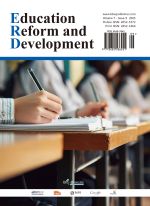Abstract
To address the shortcomings of traditional teaching methods in personalized support, real-time feedback, and comprehensive evaluation, this study proposes an AI-driven instructional model. The model provides students with personalized learning paths and structured resources through intelligent recommendation systems and knowledge graphs; optimizes the learning process by integrating blended learning to achieve a closed-loop system encompassing self-directed pre-class preparation, interactive in-class engagement, and targeted post-class reinforcement; and establishes a multidimensional evaluation system that combines formative assessment with competency-based evaluations of competition performance and practical skills, thereby fostering students’ comprehensive development. The findings demonstrate that this model not only significantly enhances students’ mastery of theoretically challenging courses such as Probability and Mathematical Statistics, but also improves learning initiative and practical application skills, offering a scalable intelligent solution for the reform of mathematics education in higher education institutions.
References
Arfeli D, Weber M, Uckelmann D, et al., 2025, Development of an AI Competence Matrix for AI Teaching at Universities. Springer, 1140: 91–110.
Oss S, 2024, Exploring the Role of AI in Learning and Teaching Thermodynamics: A Case Study with ChatGPT. The Physics Educator, 6(3): 2450013.
Barella A, Valero S, Carrascosa C, 2009, JGOMAS: New Approach to AI Teaching. IEEE Transactions on Education, 52(2): 228–235.
An X, 2024, Research on Evaluation of Online Education Effectiveness Based on AI Teaching Aid System. Applied Mathematics and Nonlinear Sciences, 9(1): 1–19.
Zhao H, Min Q, 2024, Exploring Continued Usage of an AI Teaching Assistant among University Students: A Temporal Distance Perspective. Information & Management, 61(6): 104012.
Qin Y, Cao H, Xue L, 2020, Research and Application of Knowledge Graph in Teaching: Take the Database Course as an Example. Journal of Physics Conference Series, 1607: 012127.
Bai Y, Liao X, 2024, Research and Application of Knowledge Graph Design for Interactive Teaching Platform Based on Artificial Intelligence. Applied Mathematics and Nonlinear Sciences, 9(1): 1–15.
Meissner R, Kbis L, 2020, Annotated Knowledge Graphs for Teaching in Higher Education: Supporting Mentors and Mentees by Digital Systems. Springer, 12128: 551–555.
Shi B, Weninger T, 2015, Fact Checking in Large Knowledge Graphs – A Discriminative Predicate Path Mining Approach. Knowledge-Based Systems, 104(C): 123–133.
Li Y, Liang Y, Yang R, et al., 2024, CourseKG: An Educational Knowledge Graph Based on Course Information for Precision Teaching. Applied Sciences, 14(7): 2710.
Wang P, Lin J, 2021, Construction and Application of Knowledge Graph of Teaching Arrangement for Cross-Disciplinary Majors. IEEE, 12: 85–88.
Ladur A, Egere U, Ravit M, et al., 2025, A Blended Learning Approach for Capacity Strengthening to Improve the Quality of Integrated HIV, TB, and Malaria Services during Antenatal and Postnatal Care in LMICs: A Feasibility Study. BMC Medical Education, 25(1): 1–11.
So H, Brush T, 2008, Student Perceptions of Collaborative Learning, Social Presence and Satisfaction in a Blended Learning Environment: Relationships and Critical Factors. Computers & Education, 51(1): 318–336.
Siah C, Ang W, Ma W, et al., 2024, Integration of Podcasts in Blended Learning to Expand Nursing Undergraduates’ Learning Perspectives on Age-Related Topics. Journal of the American Geriatrics Society, 72(8): 2627–2629.
Zhang Y, Chen P, Jiang S, et al., 2024, Effects of Perceived Teacher Support on Student Behavioral Engagement in the Blended Learning Environment: Learning Experience as a Mediator. Journal of Contemporary Educational Research, 8(5): 297–316.
Chuts-Pérez V, Esteve-Faubel R, Aparicio-Flores M, et al., 2024, Enhancing Visual and Plastic Education Training: A Blended Learning and Flipped Classroom Approach. Journal of New Approaches in Educational Research, 13(1): 11–30.
